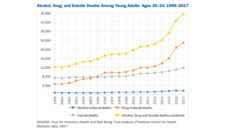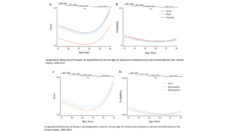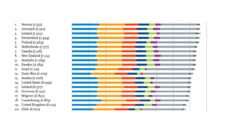Most people wake up each day and engage in goal-directed behavior. If someone wants to build more muscle, they may choose to lift weights. If they want to help people in their local community, they volunteer at a food bank. The list of goal-directed behaviors is endless. However, these goal-directed behaviors do not necessarily add up to having a greater sense of purpose. Individuals with a sense of purpose also believe that their goals and their goal-directed behaviors are guided by a higher aim.
In the journey of life, goal-directed behaviors are the car, goals are the landmarks a person reaches along the way, and the higher aim is the final destination. For example, someone whose higher aim is to live a long and healthy life may make goals to achieve a healthy BMI and maintain low stress levels. With this in mind, they pursue these broader goals by eating nutritious foods, exercising, and practicing mindfulness. Whatever the final destination is, the key to having a greater sense of purpose is believing that the destination is guiding the journey.
Research has shown that sense of purpose may do more than provide a trajectory for your life. Individuals with a greater sense of purpose also tend to have greater life satisfaction, lower levels of depression, less stress, fewer health problems, and longer lifespans. With this individual-oriented research in mind, we sought to understand more about these positive outcomes when we scale up and look at overall populations. Do levels of sense of purpose vary from one community to the next? And, if so, do variations in sense of purpose at the state level demonstrate the same correlations researchers have found at the individual level?
States are likely to be better off when more of their citizens feel guided by a higher aim and can reap the benefits of having that greater sense of purpose.
In our study, we measured purpose using three items from the 2015 Gallup Daily tracking survey: “I like what I do every day,” “In the past 12 months, I have reached most of my goals,” and “I get to use my strengths to do what I do best every day.” For the 2015 survey, Gallup collected responses from 177,171 participants and provided us with the responses to each item aggregated by participants’ state of residence. Using these state-level figures, we calculated an average sense of purpose score for each state. We also gathered additional sociodemographic, affective well-being, and physical health data collected by Gallup, the U.S. Census Bureau, and the CDC in the same 2015 timeframe. To address our hypotheses, we calculated correlations between sense of purpose and variables in each of these categories.
With all 50 states and Washington D.C. in our analysis, we found that average levels of sense of purpose vary across the United States. State-level sense of purpose scores were positively associated with average household income, city satisfaction, and self-reported happiness. They were negatively associated with reported worry, stress, sadness, rates of cardiovascular mortality, and rates of health problems. These correlations remained when controlling for average household income. Thus, states with higher purpose scores tended to have greater average wealth, as well as happier, healthier citizens, just like individual-oriented research has indicated.
Our findings provide insights into how societies might run more smoothly if everyone on the road had a sense of where they were headed. States are likely to be better off when more of their citizens feel guided by a higher aim and can reap the benefits of having that greater sense of purpose. As such, sense of purpose should be of greater consideration at the state- and national-level when promoting the health and happiness of citizens.
Photo by Amy Shamblen on Unsplash















